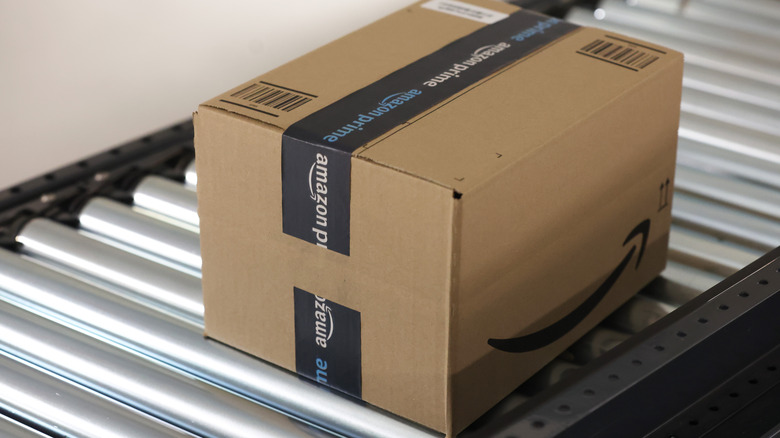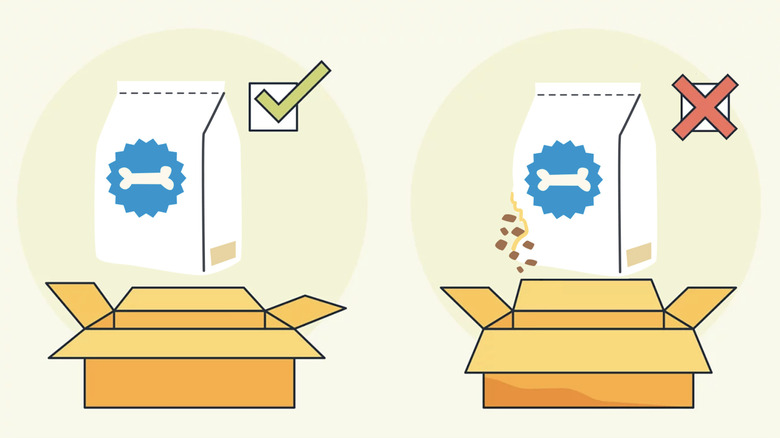The Formerly Futuristic Way Amazon Scans For Product Defects Before Shipping
We may receive a commission on purchases made from links.
When you order a product from Amazon, you expect it to arrive in one piece, functioning as it should, as soon as you take it out of the box. That's why few things are more frustrating than receiving a package only to open it and discover that what you've ordered is damaged, missing a part, or the wrong color. While Amazon makes it easy to return most items – with one of the better return policies in the e-commerce industry — and helpfully warns customers about frequently returned items, the fact is that anytime you have to return something you're losing valuable time from your day, even if that's just a few minutes.
Amazon knows this and wants to minimize the chances that you'll have to return anything at all. That's where Amazon's AI-powered private investigator tool comes in. Amazon has dubbed this tool Project P.I., and it uses generative AI and computer vision technologies to scan orders as they go through the imaging tunnels at fulfillment centers, then checking the resulting images for problems. This means you're less likely to receive a defective product when you order from Amazon. Given how effective this formerly futuristic technology is, one could argue that Amazon's generative AI-powered private investigator is proof beyond a reasonable doubt that the future is now.
How Project P.I. works
When shopping on Amazon, chances are you're more likely to focus on the different ways you can save money than the process behind how your orders get to you — and that's exactly what Amazon wants. After all, if you're satisfied with your purchases and they arrive in good condition, you're more likely to buy more. However, what you might not realize is that from the time you place your order and purchase the things in your Amazon cart, a lot goes on behind the scenes as Amazon prepares your order for shipping. Project P.I. is an important part of that.
Project P.I. plays a big role in ensuring what you order arrives at your door the way you expect it to. So, if you ordered a red smart watch with gold trim, that's exactly what you get. When your order is preparing to ship, it begins its journey by traveling through Amazon's imaging tunnels, where Project P.I. looks for problems. If the private investigator tool finds something wrong, the system flags the order, and it's not shipped to you. Instead, it sets off a process where Amazon isolates the product and takes a closer look at it to see if it's an isolated incident or part of a larger problem. This process includes Amazon associates examining the product in question to decide whether it meets the standard that can be resold on its Second Chance website. If not, Amazon might donate the product or look for other ways to get some use out of it.
Sustainability and continuous improvements
Amazon says its Project P.I. isn't just about ensuring you and other customers don't receive defective goods; it's also about the company's commitment to addressing climate change. Along with AI, Amazon has also used EVs and Robotics as part of its sustainability efforts. When you think about it, this strategy makes a lot of sense. Every time a product is shipped with a defect, the probability that a customer will return it is pretty high. That means wasted packaging and more delivery trucks on the road than otherwise would have been had the defective product been caught before shipping. More delivery trucks means higher emissions, contributing to pollution and climate change. Project P.I. helps Amazon catch problematic orders before they leave fulfillment centers, keeping customers happy while minimizing waste and unnecessary emissions.
Even with Project P.I., things can go wrong, and defective products can end up being shipped to customers. When that happens, Amazon uses a generative AI system with a multi-modal large language model (MLLM) to get to the bottom of what happened. This process includes reviewing customer complaints in an attempt to figure out why Project P.I. failed to identify a problem with an order before it shipped. A combination of analyzing customer feedback and reviewing images from Project P.I. at fulfillment centers helps Amazon do this, allowing it to determine what caused the problem in the first place, and take steps to prevent it from happening again in the future.


